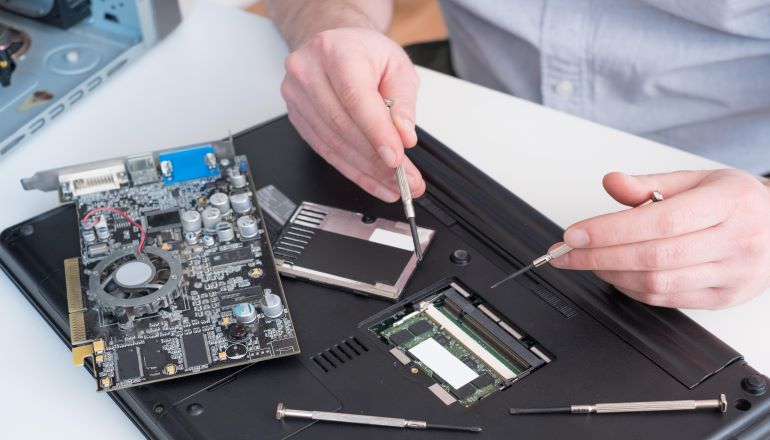Repairing That Old Smartphone May Be Worth It
A right-to-repair bill recently approved in New York state could level the field for electronics repair shops.

For years, consumers faced with replacing an older, perhaps obsolete electronics product such as a laptop or mobile phone would weigh the cost of repairing an out-of-warranty product against a costlier but newer replacement product. Oftentimes, buying the newer product is chosen because the existing product can only be repaired through the manufacturer’s authorized repair facilities, who can set whatever price they want for the repair as well as control the distribution of replacement parts.
This form of planned obsolescence is the target of pending legislation in New York State that would guarantee consumers would be able to repair electronic equipment, whether it be smartphones, computers, or other equipment, at a fair price by repair shops, including mom-and-pop outfits. The bill, designated New York Senate Bill S410A and awaiting the signature of New York Governor Hochul, would require manufacturers to provide owners and independent repair businesses with fair service information and affordable replacement parts.
Right-to-repair laws have long existed in industries such as automotive, where consumers have the choice of taking their vehicles to either dealers or independent repair shops. But electronics manufacturers have made matters tough on consumers by requiring they use only authorized repair shops or ship products directly back to them, resulting in delays and inconvenience to consumers. Existing repair practices unfairly penalize consumers located in geographic regions without access to authorized repair facilities and prevent third-party shops from repairing electronics because they do not have access to replacement parts. They also hamper consumers who may wish to undertake simple product repairs on their own.
While many states have pushed for right-to-repair laws in electronics, they have been met with strong resistance, partially due to pressure from tech manufacturers concerned about unscrupulous repair shops, potential liability issues with some products, and intellectual property concerns stemming from more repair people now acquiring product knowledge. The state of California, for instance, failed to pass a right-to-repair bill in May.
Despite these issues, right-to-repair advocates continue to apply pressure on states to approve such legislation, and recent trends may slowly turn the tide in their favor. For one, ongoing supply-chain issues and trade issues have led to parts shortages and delays in shipping many electronics products. This applies not only to popular consumer electronics but also to everyday working appliances, where a wait, for instance, for a new washer can sometimes run into weeks. These issues surfaced during the consumer buying frenzy during the COVID-10 pandemic, and while demand has subsided, supply-chain issues have not. Current inflationary pressures also mean buying a new product to replace an older one is often much more expensive than before.
Mounting concerns over environmental waste and greenhouse gas emissions are also a factor. An article on the site of American Action Forumstated that e-waste is on track to reach 75 million metric tons by 2030, with 53.6 metric tons discarded in 2019. Waste from electronics takes on many forms, such as metals, plastics, chemicals from lead-acid batteries, mercury from cold cathode fluorescent lamps, and chlorofluorocarbons from refrigerators and freezers. Repairing these products and appliances could potentially extend their life and reduce some of the e-waste.
Right-to-repair advocates believe that expanding repair choices for consumers could potentially reduce repair costs, as the presence of independent shops could foster greater competition for services and perhaps even force manufacturers to lower their prices for repairs and parts. Third-party repair shops would also provide badly-needed services for consumers located in remote or rural areas and not force them to ship products back to the manufacturer. And, technically-proficient consumers could in some cases perform minor repairs to electronic products themselves as they gain greater access to replacement parts.
Spencer Chin is a Senior Editor for Design News covering the electronics beat. He has many years of experience covering developments in components, semiconductors, subsystems, power, and other facets of electronics from both a business/supply-chain and technology perspective. He can be reached at [email protected].
About the Author(s)
You May Also Like


.jpg?width=300&auto=webp&quality=80&disable=upscale)


